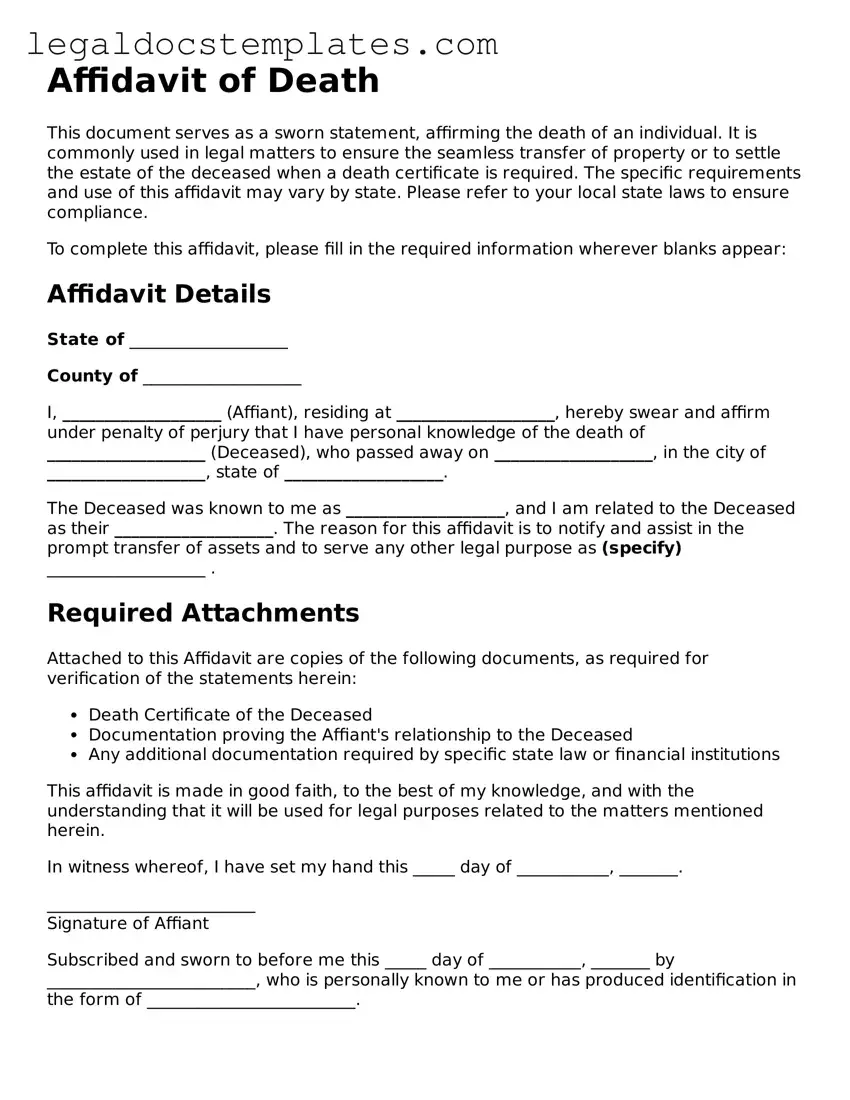Affidavit of Death
This document serves as a sworn statement, affirming the death of an individual. It is commonly used in legal matters to ensure the seamless transfer of property or to settle the estate of the deceased when a death certificate is required. The specific requirements and use of this affidavit may vary by state. Please refer to your local state laws to ensure compliance.
To complete this affidavit, please fill in the required information wherever blanks appear:
Affidavit Details
State of ___________________
County of ___________________
I, ___________________ (Affiant), residing at ___________________, hereby swear and affirm under penalty of perjury that I have personal knowledge of the death of ___________________ (Deceased), who passed away on ___________________, in the city of ___________________, state of ___________________.
The Deceased was known to me as ___________________, and I am related to the Deceased as their ___________________. The reason for this affidavit is to notify and assist in the prompt transfer of assets and to serve any other legal purpose as (specify) ___________________ .
Required Attachments
Attached to this Affidavit are copies of the following documents, as required for verification of the statements herein:
- Death Certificate of the Deceased
- Documentation proving the Affiant's relationship to the Deceased
- Any additional documentation required by specific state law or financial institutions
This affidavit is made in good faith, to the best of my knowledge, and with the understanding that it will be used for legal purposes related to the matters mentioned herein.
In witness whereof, I have set my hand this _____ day of ___________, _______.
_________________________
Signature of Affiant
Subscribed and sworn to before me this _____ day of ___________, _______ by _________________________, who is personally known to me or has produced identification in the form of _________________________.
_________________________
Notary Public
My commission expires: _______________
